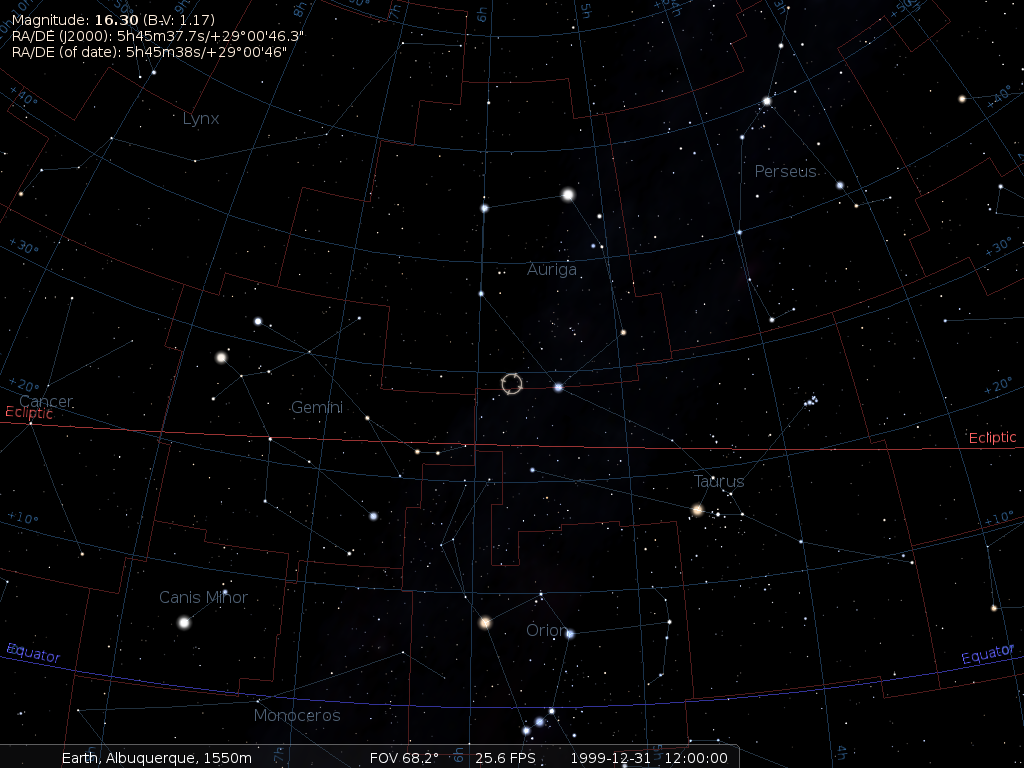Per https://en.wikipedia.org/wiki/Galactic_Center, the galactic center
is at RA 17h 45m 40.04s, Dec -29° 00' 28.1" in the J2000 epoch.
The point opposite this would be RA 5h 45m 40.04s, Dec +29° 00' 28.1"
(J2000).
The nearest star I could find to this position is a relatively
uninteresting 16th magnitude star:

The nearest "interesting" star is HIP 27088, which is an 8th magnitude
double star:

My calculations show this point is in Auriga, not Gemini, albeit just barely:

A slightly more zoomed out view:

As @zephyr notes, the fastest way out of our galaxy would be "straight up" (perpendicular to the plane of the galaxy), not away from the center, since the Milky Way's "height" is much smaller than its length/width.
If someone wants to replicate what I did on Stellarium and use RA/DEC grids, be sure to set the date to 1999 Dec 31 at noon GMT: the grids Stellarium displays are based on the current date, not J2000.
NOTE: http://www.usno.navy.mil/USNO/astrometry/optical-IR-prod/nomad lists even more stars than Stellarium (Stellarium uses only part of this catalog), so you might be able to find an even closer star to this point, but I was too lazy to do so.
EDIT: Newer versions of Stellarium let you overlay galactic coordinates. I'm too lazy to do this myself, but if someone else wants to, it would be a better answer.



